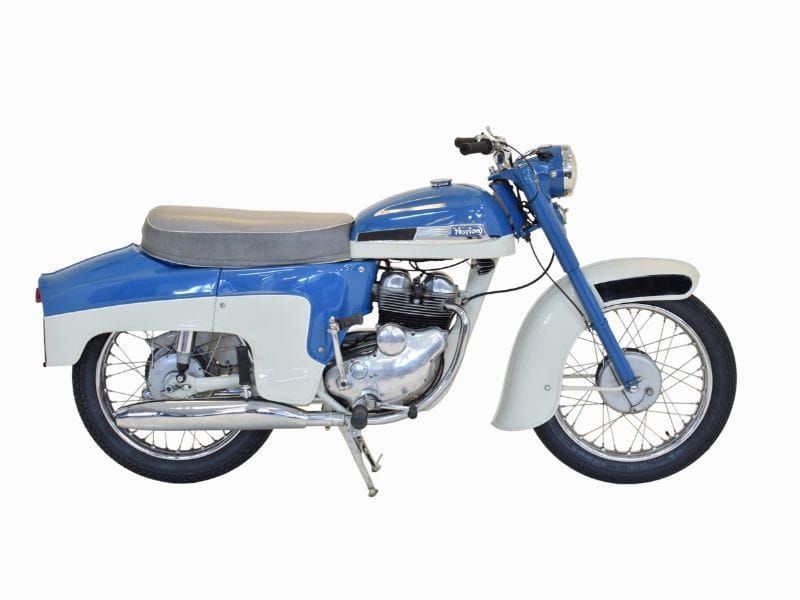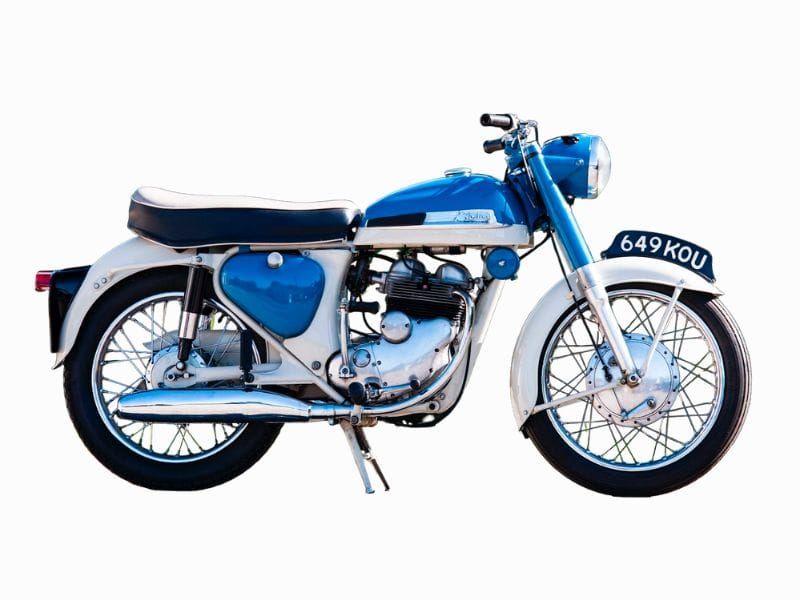History of Norton
Norton Motorcycles History
Norton Motorcycles is a British manufacturer founded in 1898, known for its high-performance bikes and racing successes. Despite ownership changes and financial struggles, the brand continues to produce quality models with a focus on both modern technology and traditional craftsmanship.
This article delves into the history of Norton Motorcycles, including the evolution of its models, key achievements, and its current standing in the motorcycle industry.
Origin Story
Norton Motorcycles was established in 1898 by James Lansdowne Norton in Birmingham, England. The company initially began as a manufacturer of fittings and parts for the two-wheel trade, but quickly diversified into producing motorcycles. In 1902, the first Norton motorcycle, the Energette, was introduced—powered by a 143cc single-cylinder Clement engine which served as the foundation for future models.
In 1907, Norton made its mark in the racing world by winning the twin-cylinder class in the inaugural Isle of Man TT race. This success helped to establish Norton's reputation as a producer of high-performance motorcycles. Additionally, the 1930s saw Norton solidify its presence in the racing world—with multiple wins at the Isle of Man TT and setting numerous speed records.
During World War II, Norton supplied motorcycles to the British military, which highlighted the brand's reliability and allowed the company to endure the war. Following the war, Norton continued to innovate by developing new models and offering a range of bikes for both street and racing use.
Throughout the years, Norton faced several changes of ownership—marking financial struggles, increased competition especially from Japanese manufacturers, and mismanagement as the major contributors. Despite efforts to modernize and diversify its product line, Norton was unable to reverse its decline in the 1990s.
Although it had a bit of recovery in 2008 when Stuart Garner bought the company, poor financial decisions and consequently legal issues led Norton into administration in 2020. However, not all hope was lost. Now as part of TVS Motor Company from 2020, it seems Norton will be able to get back on its feet.
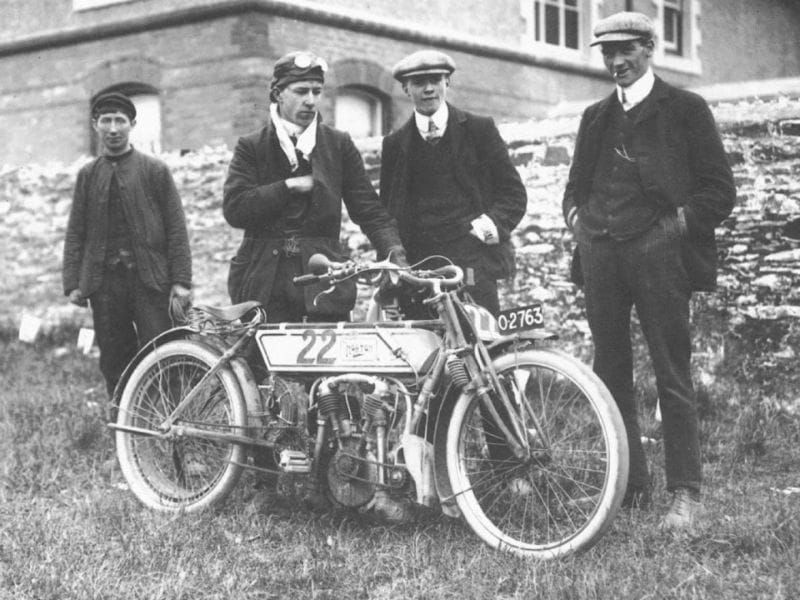
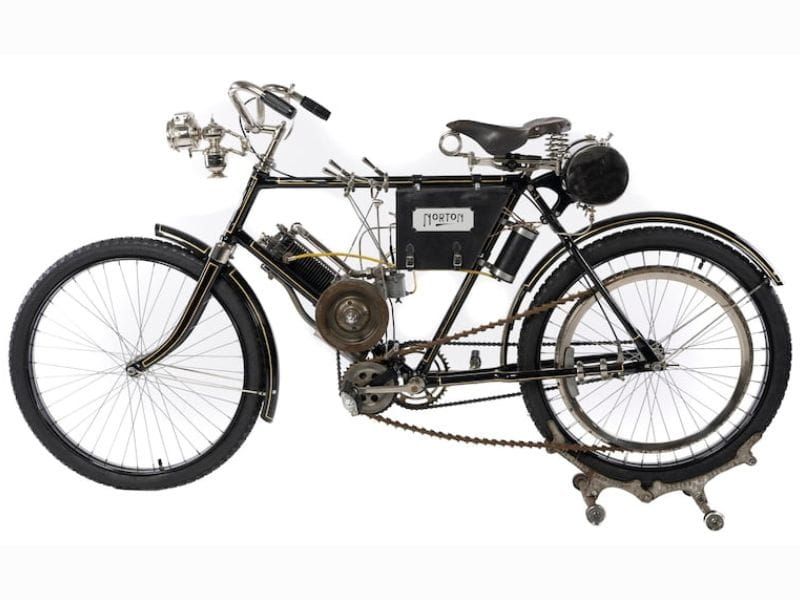
History
Norton Motorcycles has a long and storied history, including several changes in ownership and periods of financial turmoil. Despite this, Norton has remained a popular brand among motorcycle enthusiasts.
It all started in 1898, when James Lansdowne Norton, also known as "Pa", established Norton in Birmingham. The company started building motorcycles with French and Swiss engines in 1902—producing its very first motorcycle (the Energette). The power source for this vehicle was a 143cc single-cylinder Clement engine.
In 1907, a Norton motorcycle equipped with a Peugeot engine and ridden by Rem Fowler achieved a win in the twin-cylinder category—at the first-ever Isle of Man TT race. This marked the start of a long-standing tradition of success in racing.
1910 - 1930
In 1913, the business faced financial troubles and was saved by R. T. Shelley & Co. Norton Motors Ltd was formed shortly after, with James Norton and Bob Shelley as joint directors.
Bob Shelley's brother-in-law Dan O’Donovan was later brought in and designed the company's first production racer, the BS 490. The invention helped set multiple records in 1914, before the outbreak of World War I halted production and competition motorcycling.
1914 also saw the creation of a new logo (the "curly N" logo), created by James Norton and his daughter Ethel and was featured on all new Norton tanks from 1916. Unfortunately, just as the company was gaining traction, James Norton passed away in 1925 at age 56. However, his vision for the brand continued to thrive.
After a period of interruption, Norton resumed providing motorcycles for civilian use in 1919. These catered to riders who sought the robustness and performance offered by single-cylinder engines with individual gearboxes and a long-stroke design.
The CS1—initially designed by Walter Moore as a TT racer and later sold as a street bike—won its first TT race in 1927 with Alex Bennett riding it. This was before the development of a new overhead cam engine by Arthur Carroll in 1930—which served as the foundation for all OHC and DOHC Norton single-cylinder engines.
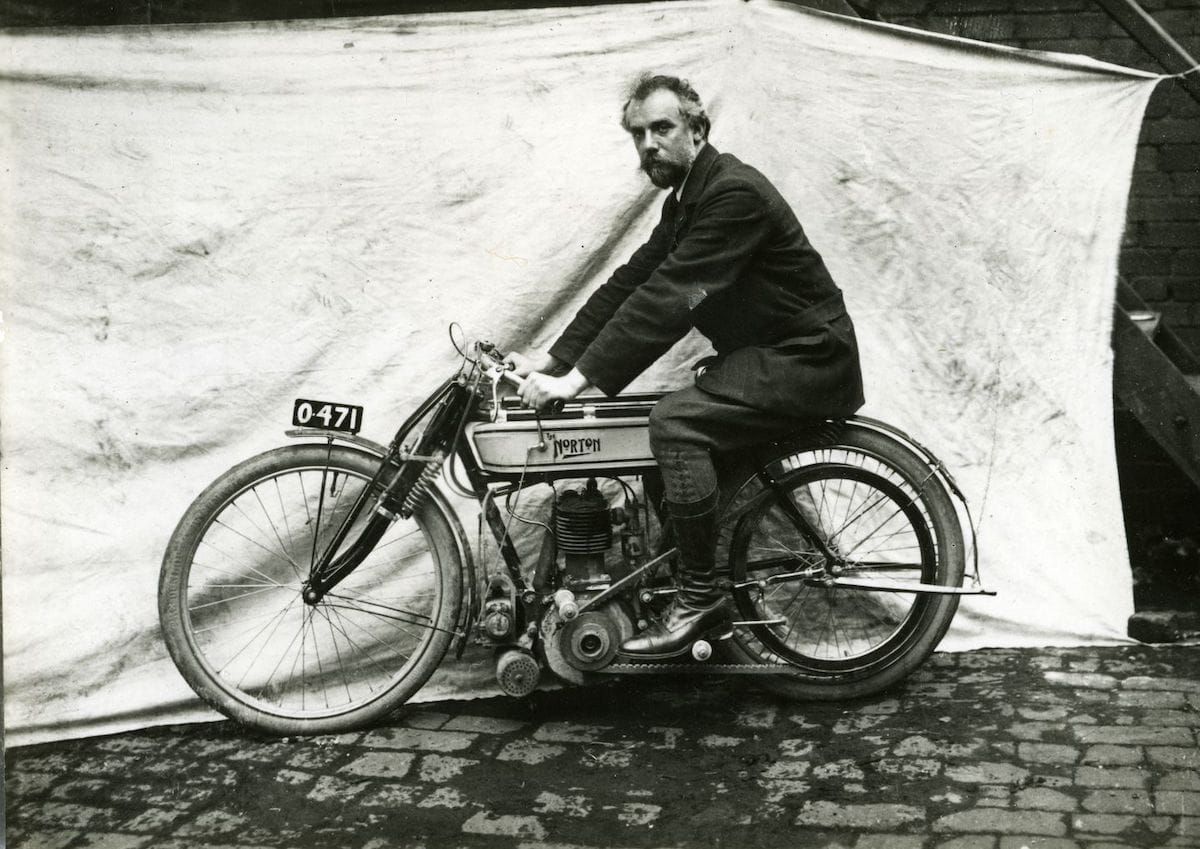
1930 - 1950
As the 1930s progressed, it became apparent that Norton motorcycles were among the top in the industry.
Norton dominated Grand Prix races, winning 78 out of 92 between 1930 and 1937. Additionally, they won 7 out of the 9 Isle of Man TTs between 1931 and 1939, these achievements helped boost the brand's popularity.
However, with the outbreak of war, Norton halted racing and shifted its focus to supporting the war effort by producing nearly 100,000 of the Norton 16H and Big 4 side-valve motorcycles for the Allies.
After the war, Norton resumed production of civilian motorcycles with the Manx in 1946 and the 500 cc twin-cylinder Norton Dominator in 1949 designed by Bert Hopwood.
The Norton Motorcycle company's domination in the Isle of Man Senior TT race also persisted post-World War II—with the brand claiming victory in every annual competition from 1947 to 1954.
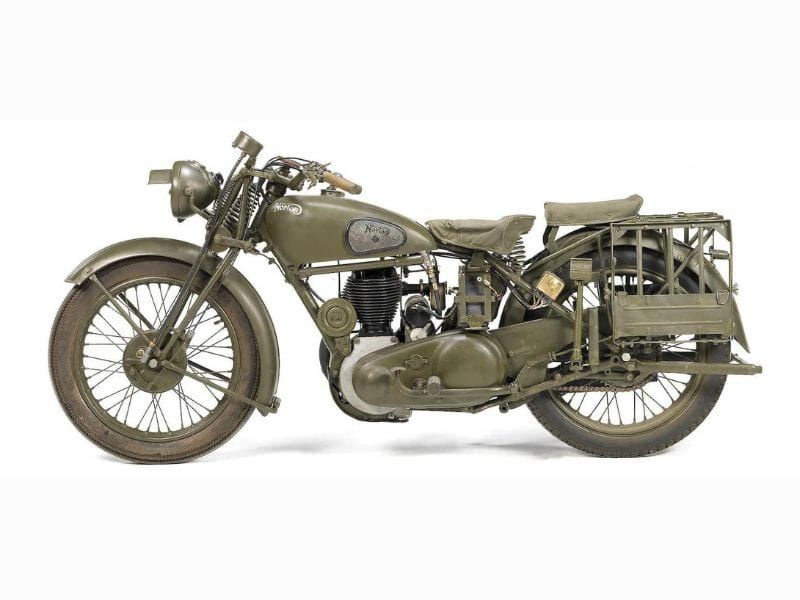
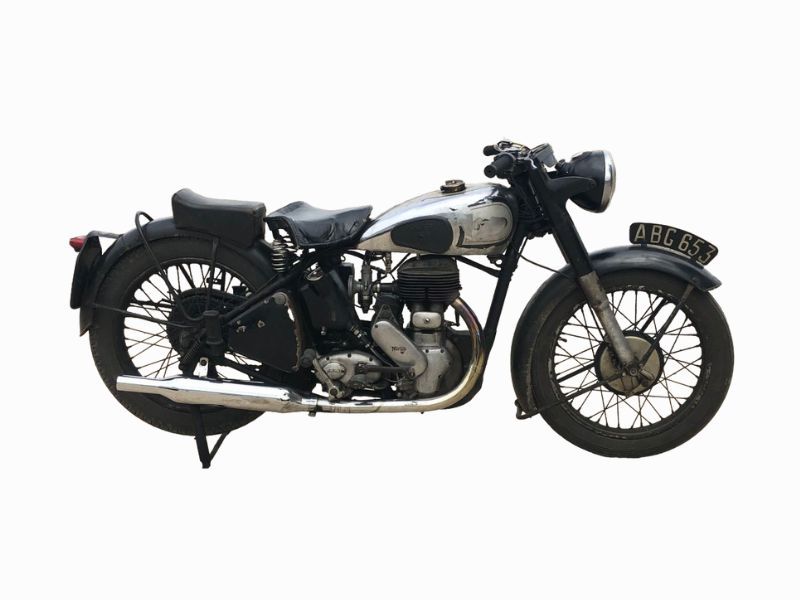
1950 - 1960
After World War II, Norton struggled to regain its dominant position in racing as it faced fierce competition from Italian and British-made motorcycles from AJS with multiple cylinders.
However, this changed when in 1950 a new frame design (the featherbed frame) developed by the McCandless brothers of Belfast was implemented.
Introduction of the Featherbed Frame
The implementation of the featherbed frame rejuvenated the Manx motorcycle and contributed to a remarkable double hat-trick achievement at the Isle of Man TT, by riders John Surtees and Geoff Duke.
This new design which enabled a motorcycle to have an optimal mass-stiffness distribution quickly became the standard to which all other frames were compared.
In 1951, Norton introduced the Dominator for international markets—featuring the Featherbed frame and exported as the Model 88. Production of this frame expanded and it became the standard production item for new Norton models, including overhead valve single-cylinders.
Between 1951 and 1952, Geoff Duke, became the world champion in both the 350cc and 500cc classes while riding for Norton. He was subsequently honored with the OBE (Officer of the Most Excellent Order of the British Empire) in 1953 for his contribution to motorcycle racing.
Financial Difficulties and Associated Motor Cycles Ltd (AMC) Acquisition
In 1952, Norton was facing financial difficulties once more. The change to the successful Featherbed frame brought some challenges—such as a decrease in sales for older models as customers awaited the new Featherbed Nortons. Another problem was a scarcity of Reynolds 531 steel tubing, which was used for frame welding, in the early 1950s.
As a result, in 1953, Associated Motor Cycles Ltd (AMC)—which also owned brands such as Matchless and AJS—intervened and acquired Norton Motorcycles. And for some time, Norton benefited from its resources.
However, AMC's management approach, which would ultimately lead to the downfall of the company, did not prove beneficial for Norton in the long run.
New Market with the Norton Jubilee and Navigator
In 1958, Norton introduced the 250cc Jubilee, a motorcycle geared towards beginners, which featured the smallest engine ever made by the company. This move created a brand new market, and the engine size was later increased to 350cc, resulting in the creation of the new Norton 350 Navigator in 1960.
1960 to Today
-
List Item 1
In 1960, Norton introduced the Manxman, its first 650 twin motorcycle. It was mainly exported to the United States, but also found its way to Australia, Sweden, and the Falklands. Two years later, the Atlas 750 was produced and it was primarily meant for the American market.
Unfortunately, in 1966, due to financial difficulties, AMC was taken over by Manganese Bronze Holdings Ltd and restructured as Norton-Villiers under the leadership of Dennis Poore.
Out of Norton's previous models, the 750cc Atlas twin seemed to be the most promising. However, the high RPMs caused vibration problems. To solve this, Norton developed isolastic suspension and separated the engine from the frame with rubber bushes for a smoother ride—resulting in the 745cc Norton Commando twin.
-
Norton CommandoList Item 2
In 1967, the Norton Commando, the world's first production superbike, was revealed to the public at the Earls Court Motor Show. The Commando was widely popular selling over 55,000 units in the following decade and was named Motor Cycle News' Machine of the Year for five consecutive years.
However, as Japanese motorcycles became more popular, many British motorcycle brands struggled, and production of the Commando was halted in 1977.
-
Norton Villiers TriumphList Item 3
In 1972, Norton introduced the ‘Combat’ engine to the market. However, another British motorcycle company, BSA, was facing financial difficulties, and the government stepped in with a bailout on the condition that they merge with Norton-Villiers—leading to the formation of Norton Villiers Triumph (NVT) in 1973.
The following year, Norton began working on a new monocoque, pressed steel frame, paired with a 500cc engine, known as the ‘Wulf’. However, development was eventually abandoned in favor of the rotary Wankel-type engine.
Under the NVT brand, Norton released the ‘828 Roadster’, MK II ‘Hi Rider’, JPN Replica, and the MK IIa ‘Interstate’ in 1974. By 1975, the Norton lineup had been reduced to just two models: the MK III Interstate and the Roadster.
-
The Rotary Engine EraList Item 4
In the 1980s, the liquidation of NVT caused the companies under it to be separated and dissolved, with Norton coming back in 1988.
Norton launched the new ‘Commander’ and the Spondon Engineering framed F1 in 1988.
In 1992, Norton achieved success in the TT with the Senior TT win by Steve Hislop on his Abus Norton model—the first British win in 30 years.
The Wankel-engined Interpol 2—with styling much like that of a BMW R100RT—brought in some sales through the police force, and a civilian version of the rotary-powered motorcycle (the Classic) was also produced. However, commercial sales were sluggish and mismanagement issues led to a financial decline once more.
In the late 1990s, US-based Kenny Dreer, who initially modified Commandos, started to produce entire motorcycles. He was planning to manufacture the 961 Commando in the early 2000s, but ultimately halted operations in April 2006 due to financial constraints.
-
Norton's Acquisition by Stuart Garner
Fast forward to 2008, Stuart Garner acquired Norton Motorcycles and aimed to revitalize the iconic brand at its home in Donington Park. However, certain business practices came under scrutiny and legal proceedings were taken against him and some of the associates of Norton/Garner—resulting in a setback for the company once again.
Although it seemed like Norton's journey may have come to an end, there was still a glimmer of hope.
-
Norton's Future under TVS Motor Company: 2020-Present
In April 2020, TVS Motor Company acquired Norton Motorcycles, marking a new era for the brand. In 2021, Norton moved to new facilities, introducing new and innovative models to help the brand regain its leading position in the global motorcycle market.
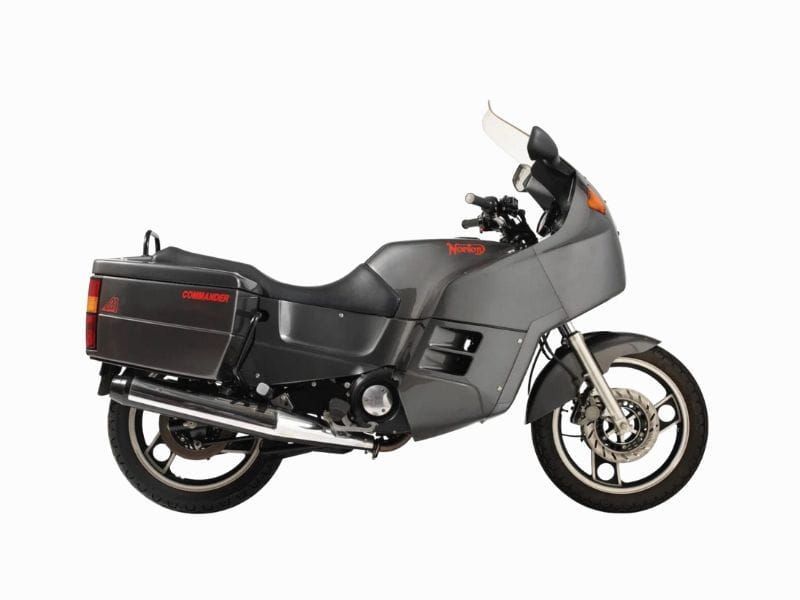
Key Milestones
-
List Item 1
Here are some of the key milestones in Norton's history, including the models, events, and achievements that have helped to shape the brand into what it is today.
-
Norton's First Motorcycle: The EnergetteList Item 2
The introduction of the Energette, Norton's first motorcycle, is a significant piece in the company's history. With its 143cc single-cylinder Clement engine, the Energette marked the beginning of Norton's journey as a motorcycle manufacturer.
The Energette set the foundation for Norton's future models and established the company as a pioneer in the motorcycle industry.
-
Norton Wins First ever Isle Of Man TTList Item 3
Norton's win in the inaugural Isle of Man TT in 1907 is remembered as a defining moment in the company's history and a symbol of its racing heritage. Riding a 5hp Peugeot-engine Norton, Rem Fowler won the twin-cylinder class solidifying his place as one of the most accomplished motorcycle racers in the country.
-
War ContributionList Item 4
The war demanded much from the industry, and Norton did their part by supplying close to 100,000 motorcycles to the Allied forces.
During the war, Norton had to adapt their production to meet the demands of the military. They produced several models specifically for the war effort, including the Norton 16H and Big 4 side-valve model, reliable motorcycles that were well-suited for military use.
-
The Use of the Manx Engine in Formula 3
Manx Nortons played a key role in post-war car racing development. With its high power output, the Manx engine became a popular choice for the Formula 3 category by 1950.
As a result, many complete Manx motorcycles were bought and stripped of their engines for car racing, as Norton did not sell standalone engines.
-
The Featherbed Frame
Developed in the 1950s by Rex McCandless, the featherbed frame was a revolutionary design that changed the way motorcycles were built. The frame was made of thin-walled tubing, which was stronger and lighter than traditional frames, resulting in better handling and performance of the bikes.
First used on the Norton Manx racing motorcycle, it helped the Manx win several races and established Norton as a major player in the motorcycle racing world. It also became the standard for Norton motorcycles for several decades and continues to be celebrated by enthusiasts today.
-
The World's First Production Superbike
The Norton Commando, revealed to the public in 1967 at the Earls Court Motor Show, was a great achievement in the brand's history as the world's first production superbike.
Its popularity was undeniable, with over 55,000 units sold in the following decade and earning the title of Motor Cycle News' Machine of the Year for five consecutive years.
-
Norton’s Purchase by TVS Motor Company: A New Era for the Brand
In April 2020, Norton Motorcycles was taken over by TVS Motor Company which marked the start of a new and exciting era for the brand and its supporters.
In 2021, Norton underwent a resurgence by drawing inspiration from the past to create a legacy for the future. This included moving to new state-of-the-art facilities and introducing new models. These innovative models would help Norton reassert itself as one of the leading motorcycle brands in the world.
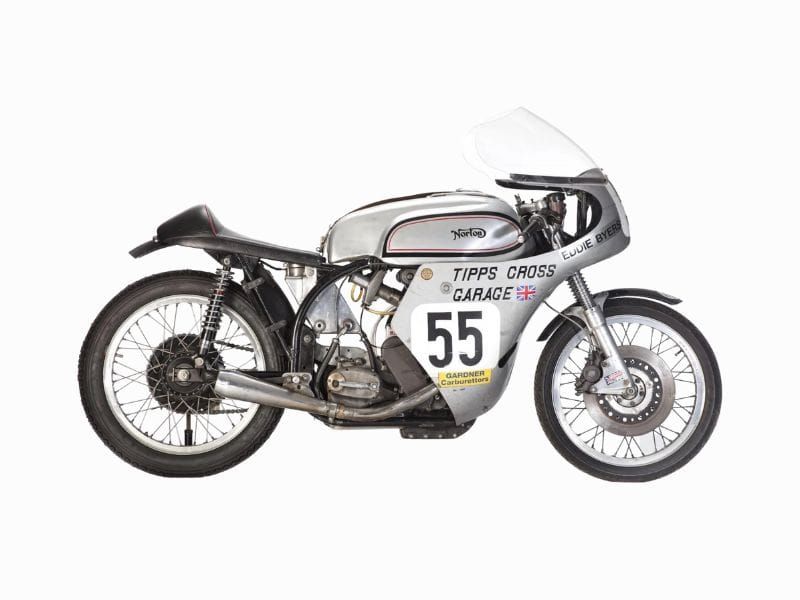
Racing Dominance
-
1930sList Item 1
Norton's success in the racing scene in the 1930s was a major milestone in the company's history. Winning 78 out of 92 Grand Prix races and 7 out of 9 Isle of Man TTs helped establish Norton as one of the top motorcycle brands and sparked its popularity among enthusiasts.
-
1940 - 1960List Item 2
Norton's dominance at the Isle of Man Senior TT continued after WWII, with the brand winning the race every year from 1947 to 1954.
When the featherbed frame was introduced in 1950, it gave the Manx motorcycle a significant boost in performance. This new design helped the Manx achieve the remarkable feat of winning six consecutive Isle of Man TT races, thanks to the skilled riders John Surtees and Geoff Duke.
In 1952, Geoff Duke, riding for Norton, achieved a historic feat by becoming world champion in both the 350cc and 500cc classes and was later awarded the OBE for his contribution to motorcycling.
-
1980sList Item 3
In the late 1980s, Norton made a comeback in the racing scene with the introduction of the rotary race bike designed by Brian Crighton.
The bike, piloted by Steve Spray, went on to win several national races, including the British Formula One Championship and the 750cc Supercup Championship in 1989 on the RCW588, with JPS as the title sponso
-
1990sList Item 4
In the early 1990s, Steve Hislop achieved great success on his Abus Norton motorcycle, winning the 1992 Isle of Man Senior TT. This win was the first for a British motorcycle in nearly 30 years and is still remembered as one of the greatest senior races of all time.
In 1994, Ian Simpson rode a Norton motorcycle sponsored by Duckham's to victory in the British Superbike Championship, marking two decades of victories for the brand.
-
2018
In 2018, Norton's hard work and dedication to development were rewarded when Josh Brookes rode the SG7 to become the fastest British bike at the Isle of Man TT, a significant achievement for the brand.
Key Innovations
-
The Norton ManxList Item 1
This model was a top performer in the late 1940s and early 1950s, thanks to its inclusion of the Featherbed Frame in 1950. This update allowed the Manx to dominate TT and GP races across Europe.
-
The Norton DominatorList Item 2
Launched in 1949, the Norton Dominator was a twin-cylinder motorcycle powered by a 500cc engine. It featured a new "lay-down" gearbox and updated styling, including telescopic front suspension and a plunger rear suspension. It was a premium model for the brand.
-
The Norton JubileeList Item 3
This model was introduced in 1958 and was a 249cc air-cooled OHV twin designed for learners. Though it had some early issues, it featured the smallest engine Norton had ever produced and created a whole new market.
-
The Norton NavigatorList Item 4
In 1960, Norton launched the Navigator, a 349cc version of the Jubilee with improved performance and enclosed bodywork.
-
The Norton Atlas
Launched in 1962, the Atlas was a 750cc OHV twin featuring Norton's tried-and-true vertical twin engine in a Featherbed Frame. Though it had a strong performance, it struggled with vibration and was eventually replaced by the Norton Commando in 1968.
-
The Norton Commando
This iconic model was a seminal motorcycle for the brand, introduced in 1969 with a 750cc Norton Atlas engine and had a new frame featuring Isolastic Suspension to combat vibration. As the world's first production superbike, this model was a huge success for Norton.
-
Norton Rotary Motorcycles
Norton also had a brief stint with rotary motorcycles after the discontinuation of the classic Commando. These Wankel-engined bikes were developed but failed to have the same impact as Norton's traditional designs.
Noteworthy Statistics
Here are some noteworthy statistics of Norton Motorcycles throughout its history.
- Norton had an incredible winning streak in the 1930s, where they claimed victory in 78 out of 92 Grand Prix races and 7 out of 9 Isle of Man TTs. These impressive records solidified Norton's reputation as a leading motorcycle brand and continued to be a point of pride for the company and its fans.
- During WWII, Norton played a significant role in supporting the allied forces by providing nearly 100,000 military motorcycles throughout the war. The production of these motorcycles also helped Norton to survive the war and continue its legacy.
- Norton motorcycles recorded a string of victories at the Isle of Man Senior TT race, dominating the competition with wins every year from 1947 to 1954.
- The Norton Commando, revealed to the public in 1967, was a game-changer in the motorcycle industry. With over 55,000 units sold in the following decade and earning the title of Motor Cycle News' Machine of the Year for five consecutive years. It solidified its place as a milestone in Norton's history.
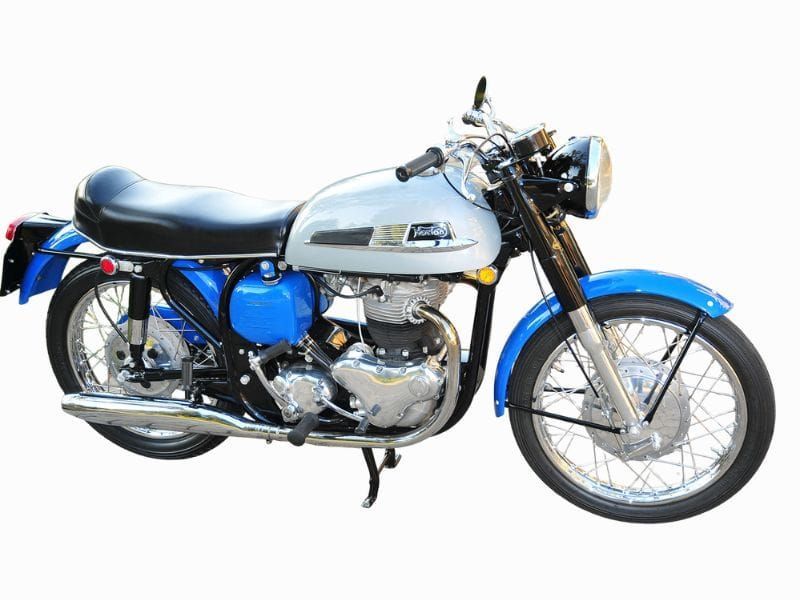
Models by Type
Norton Motorcycles has produced a variety of models over the years, from single-cylinder bikes to multi-cylinder racers. Today, Norton continues to produce motorcycles with a focus on both modern technology and traditional craftsmanship.
Here are the latest Norton productions under the TVS Motor Company.
List of Services
-
Norton V4SVList Item 1
The Norton V4SV is a luxury superbike that is designed for high performance and exceptional riding experience. It features a cutting-edge V4 engine, advanced aerodynamics and suspension, and a host of luxury features and finishes.
As the only British-built and designed superbike in production, it delivers unmatched speed and handling on the road. The V4SV was inspired by the legendary Isle of Man TT, and it was born to dominate the road.
-
Norton V4CRList Item 2
The Norton V4CR is a high-performance café racer motorcycle that combines modern technology and nostalgic design. It features a cutting-edge V4 engine, advanced aerodynamics and suspension, and stripped-back fairing that reveals Norton's craftsmanship.
The V4CR has a rebellious attitude and raw emotion, different from its sibling V4SV. With its naked design, it's all about the pure riding experience and showcasing Norton's technical capabilities.
-
Norton Commando 961 SportList Item 3
The Norton Commando 961 Sport is a modern classic motorcycle that is designed for the discerning rider who wants more presence, comfort, and fun. It features a powerful 961cc parallel-twin engine, conventional high handlebars for a relaxed, upright riding position, and a pillion seat option for shared riding experiences.
The Commando 961 Sport is a perfect blend of vintage style and modern technology, making it a great motorcycle for long-distance touring and adventure riding.
-
Norton Commando 961 Café Racer
The Norton Commando 961 Sport is a modern classic motorcycle that is designed for the discerning rider who wants more presence, comfort, and fun. It features a powerful 961cc parallel-twin engine, conventional high handlebars for a relaxed, upright riding position, and a pillion seat option for shared riding experiences.
The Commando 961 Sport is a perfect blend of vintage style and modern technology, making it a great motorcycle for long-distance touring and adventure riding.

